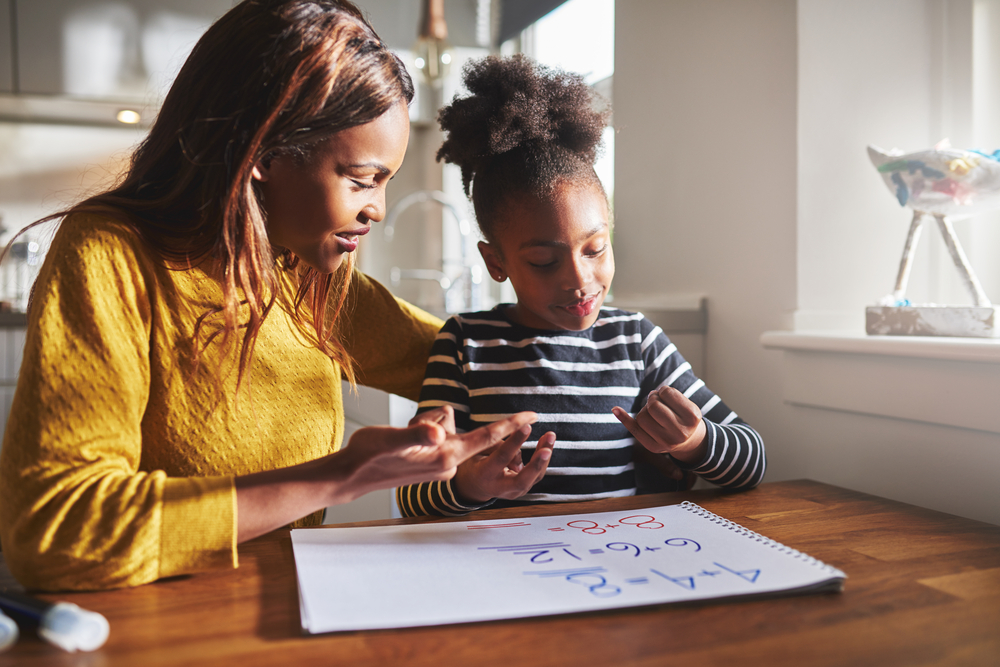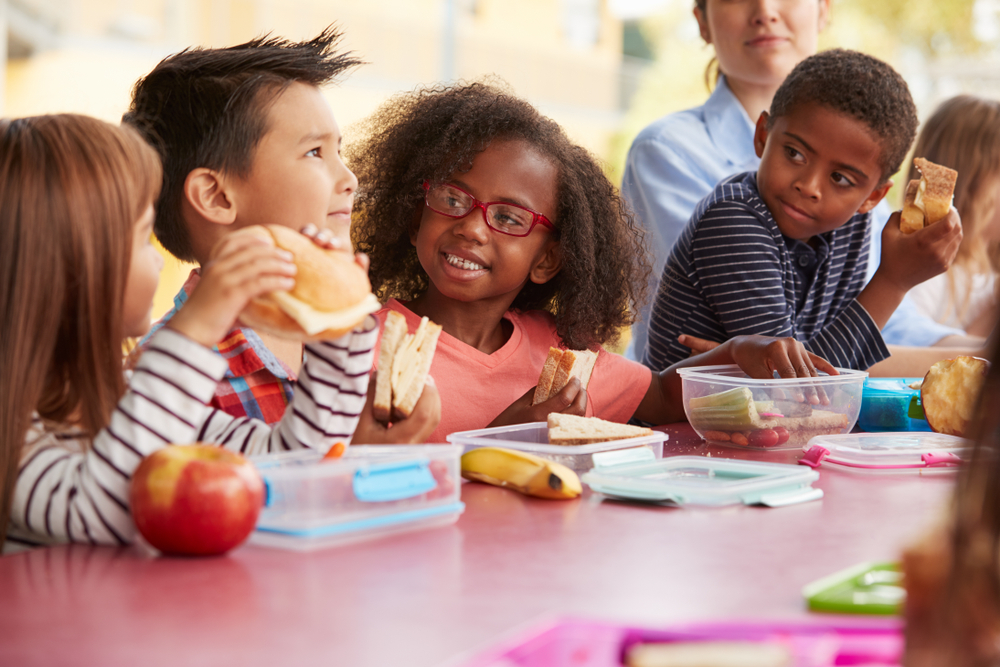Physical Science worksheets activities for Ages 5-8
6 filtered results
-
From - To
Explore our engaging Physical Science worksheets and activities designed specifically for children aged 5-8! Our resources provide young learners with fun and interactive ways to delve into essential science concepts. These worksheets encourage exploration of topics like matter, forces, and energy while fostering critical thinking skills. Each activity is tailored to align with early learning standards, ensuring that kids build a strong foundation in physical science. Perfect for classrooms or home learning, our printables include creative exercises, illustrations, and challenges that make science exciting. Enhance your child's understanding of the natural world with our thoughtfully crafted Physical Science materials!


Matter: Assessment 1 Worksheet
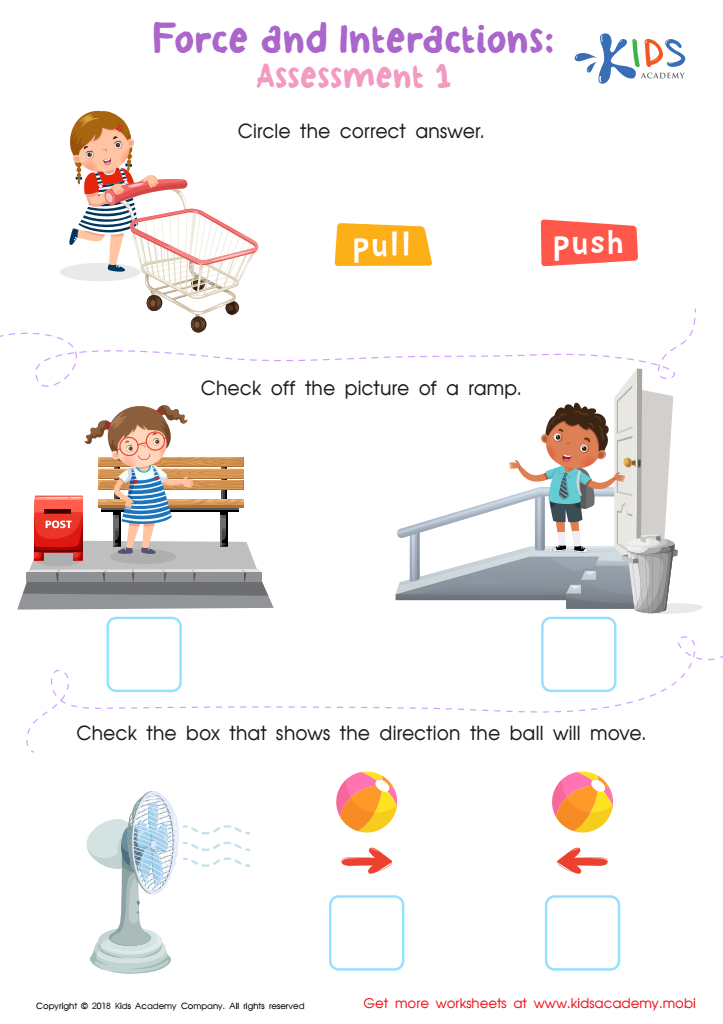

Force and Interactions: Assessment 1 Worksheet
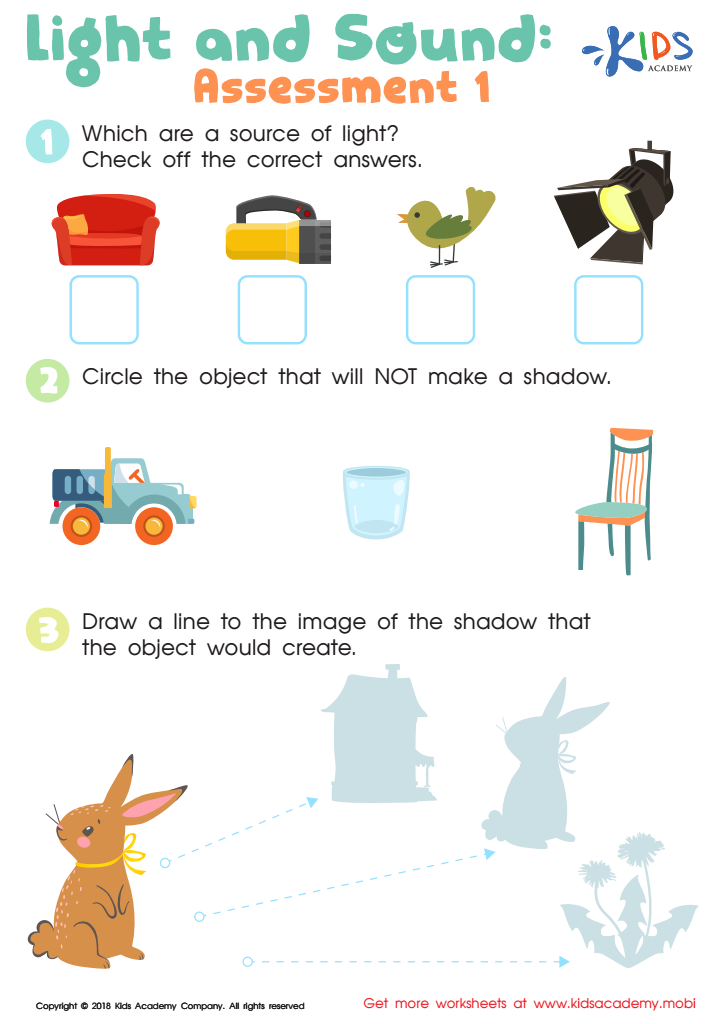

Light and Sound: Assessment 1 Worksheet
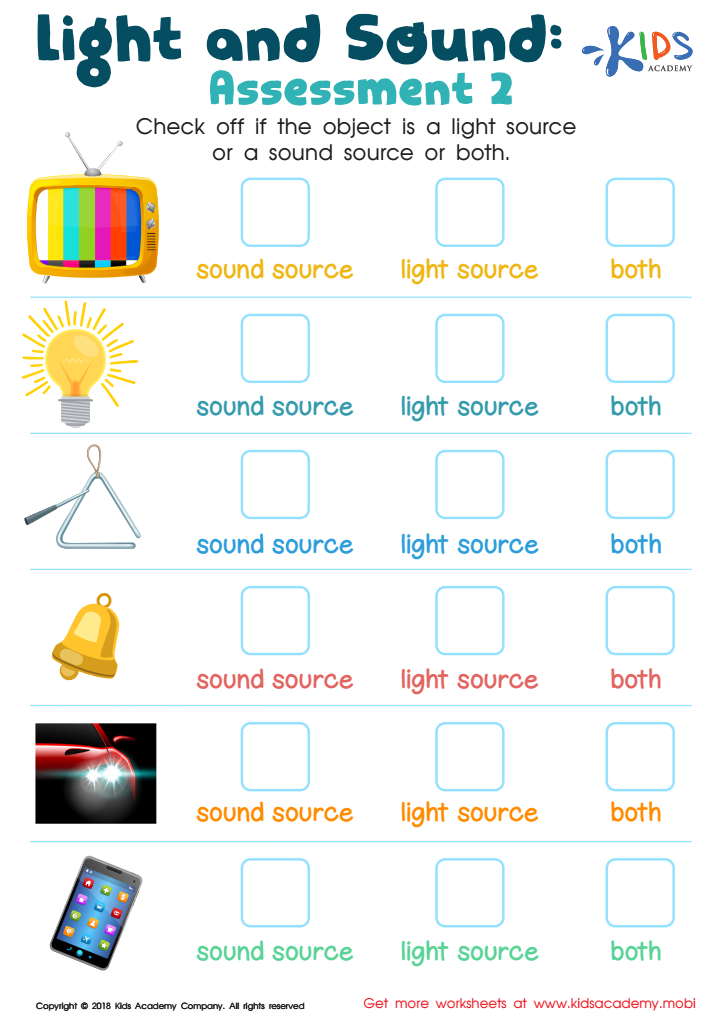

Light and Sound: Assessment 2 Worksheet
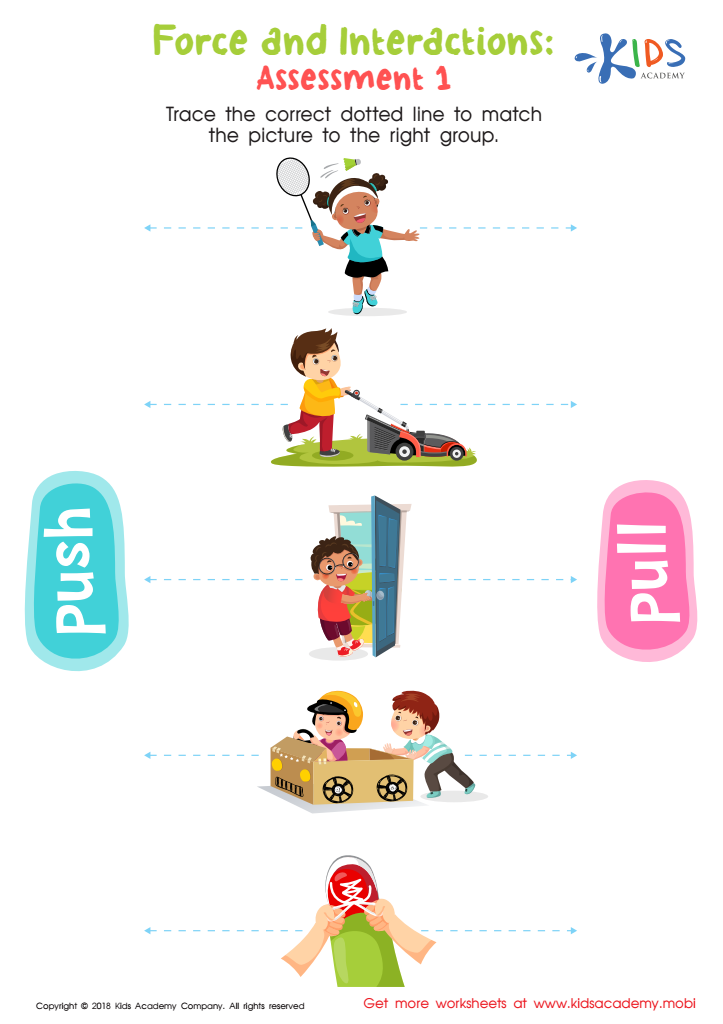

Force and Interactions: Assessment 2 Worksheet


Matter: Assessment 2 Worksheet
Physical science activities for children aged 5-8 are crucial for several reasons. Firstly, these activities engage young learners in basic scientific concepts such as matter, energy, and motion in an age-appropriate and tactile manner. Through hands-on discovery, children develop critical thinking skills and a sense of curiosity about the world around them.
Moreover, physical science fosters a love of learning by making complex ideas accessible. For example, simple experiments like building towers from blocks or mixing baking soda and vinegar introduce fundamental scientific principles through playful engagement. This approach helps strengthen children's cognitive abilities, encouraging them to find solutions to problems.
In addition, these activities instill important life skills such as teamwork, patience, and perseverance, as children often work collaboratively. They learn to ask questions, make predictions, and conduct experiments, laying the groundwork for more advanced scientific understanding later on.
Finally, prioritizing physical science in early education promotes STEM (Science, Technology, Engineering, and Mathematics) literacy, preparing children for the increasingly technology-driven world. By igniting an early interest in science, teachers and parents play a pivotal role in nurturing the next generation of innovators and problem-solvers.
 Assign to My Students
Assign to My Students





